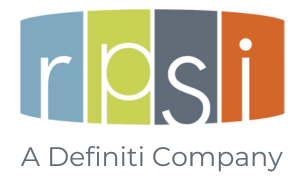Plan Sponsor Outlook – 4th Quarter 2024
Give Your Plan a Retirement Wellness Exam
An 8-Step Assessment To Help Drive Employee Retirement Readiness
Do the key features of your plan focus directly on getting your workforce fit for retirement? Use this review as a high-level guideline for prioritizing employee retirement readiness.
1. Automatic Enrollment and Escalation. Does your current plan design automatically enroll employees in the retirement plan and increase their contribution rate annually — allowing them to save more over time without having to think about it? According to Vanguard’s How America Saves 2024 report, 59% of Vanguard plans had adopted automatic enrollment, including 77% of plans with at least 1,000 participants. Most of those plans default employees into a target-date fund, at a deferral rate of 4% or higher. In addition, 69% of those plans have implemented automatic annual deferral rate increases.
2. Employer Contributions. Providing a competitive matching contribution and vesting schedule can incentivize employees to contribute more. Are you continually promoting your company match by clearly illustrating how it contributes to their retirement income goals?
3. Financial Education and Planning Resources. Do you currently offer online tools and calculators, as well as regular education sessions on financial literacy, emergency funds, budgeting, debt management, investing and retirement planning? In addition, providing access to a financial advisor for personalized planning can address individual needs and help improve retirement outcomes.
4. Diverse Investment Options. As part of a diverse investment lineup, have you considered a vetted selection of target-date funds, which offer a hands-off investment strategy and automatically adjust the asset mix as the employee approaches retirement? How about low-cost index funds, which help employees retain more of their investment returns?
5. Social Security Optimization Tools. Are you considering adding lifetime income options to help address employee concerns about outliving their income? Adding Social Security optimization tools may be just as effective. The Schwartz Center for Economic Policy recently found that delayed claiming of Social Security benefits can be a valuable way for plan participants to generate lifetime income. As funding issues with the Social Security trust fund become more urgent, helping employees with optimization strategies will become more important.
6. Behavioral Nudges. Are you periodically re-enrolling employees who have opted out, encouraging them to reconsider participation? Have you considered using data to send personalized messages that highlight individual benefits and actions to take?
7. Health Savings Accounts (HSAs). If you offer a high-deductible health plan with a triple-tax-free HSA, are you educating employees on how the HSA can help fund healthcare costs in retirement? HSA savings can help offset Medicare premiums and many other expenses.
8. Monitoring and Adjusting the Plan. Are you continuously monitoring the plan’s performance and participant behaviors to identify areas for improvement?
Informational Resources: Pew Trust Magazine: “Four Plan Features Can Boost ‘Retirement Readiness’ ” (April 12, 2024); Vanguard’s How America Saves 2024 Report.

Handle With Care
Understanding the Challenges and Needs of Employee Caregivers
According to Bank of America’s 2024 Workplace Benefits Report, 52% of the workforce identify as caregivers. Employees balancing their job duties with the demanding responsibilities of caring for a family member face several significant challenges. These challenges can impact their work performance, career progression, financial wellness and retirement confidence. Key challenges include:
Time Management. Balancing work hours with caregiving duties often leads to stress and exhaustion. In addition, unpredictable caregiving schedules can lead to absenteeism or reduced work hours.
Career Impact. Caregivers may have to take leaves of absence, work part-time or accept lower-paying jobs to accommodate caregiving responsibilities. Career progression can be hindered due to less availability for training, networking and advancement opportunities.
Financial Stress. Direct costs of caregiving (e.g., medical bills and special equipment) combined with reduced income can lead to significant financial stress. Many caregivers dip into their savings or take on debt to manage expenses, jeopardizing their financial stability and retirement savings.
Health Issues. The physical and emotional toll of caregiving can lead to health problems, increasing personal healthcare costs and reducing productivity at work.
Taking Care of the Caregivers
To help support employee caregivers, employers may want to consider offering the following:
- Flexible scheduling, remote work and part-time options
- Leave of absence or sick days to give care to family members
- Legal services, health savings accounts and flexible spending accounts
- Employee assistance programs such as counseling or support groups
- Automatic retirement plan enrollment and escalation, with a competitive employer match
- Targeted financial education on topics such as building an emergency fund, managing credit card debt, balancing expense management with retirement planning and estate planning basics.
The Bank of America survey notes that some workers are not comfortable with self-identifying as caregivers. Top reasons include a perception they aren’t committed to doing their job (47%); are concerned that their manager or co-workers will treat them differently (26%); and fear that they will be passed over for a promotion or opportunity (22%). Employers are encouraged to provide training to facilitate a culture of support for caregivers in the workplace and to help diminish the stigma around caregiving.
Informational Sources: Bank of America’s 2024 Workplace Benefits Report; AARP: “How Caregiving Affects Your Workforce.”

Plan Sponsors Ask…
Lifetime income options come in a variety of flavors. Some simply provide guidance to participants in drawing down their balances, whereas others provide guarantees backed by state-licensed life insurance companies. Different options require different levels of participant engagement. Check out Groom Law Group’s recent white paper, “Is Your DC Plan Retirement Ready? Helping Participants Get To and Through Retirement,” which includes a comprehensive section on lifetime income options that summarizes the types of products currently offered, the varying features and benefits, as well as fiduciary and other considerations.
Given that it’s the largest retirement legislation in history (with more than 90 provisions), it’s not surprising that many plan sponsors continue to need support and guidance regarding SECURE Act 2.0. According to a recent edition of UBS Workplace Voice, less than half of employers know which provisions are mandatory versus optional. In addition, UBS found that 52% of employers did not understand the timeline of when certain provisions would go into effect. To review the key provisions and their timing, check out T. Rowe Price’s “Secure Act 2.0: What Plan Sponsors Need to Know.” One of the provisions that goes into effect in 2025: plans must be ready to accept deferrals from part-time employees with at least 500 hours of service in two consecutive years
According to Vanguard’s “How America Saves 2024,” 82% of employers offer a Roth 401(k) option in addition to a traditional 401(k) option. However, just 17% of employees contribute to a Roth. While offering a Roth option in your workplace retirement plan makes great sense, employees may not take advantage of it without a little nudge. Implementing an education campaign focusing on Roth versus traditional options is a great way to promote awareness and give your employees an informed choice.
Pension Plan Limitations for 2024
- 401(k) Maximum Elective Deferral – $23,000* (*$30,500 for those age 50 or older, if plan permits)
- Defined Contribution Maximum Annual Addition – $69,000
- Highly Compensated Employee Threshold – $155,000
- Annual Compensation Limit – $345,000

Plan Sponsor’s Quarterly Calendar
- Send payroll and employee census data to the plan’s recordkeeper for plan year-end testing (calendar-year plans).
- Audit fourth quarter payroll and plan deposit dates to ensure compliance with the U.S. Department of Labor’s rules regarding timely deposit of participant contributions and loan repayments.
- Verify that employees who became eligible for the plan between October 1 and December 31 received and returned an enrollment form; follow up on forms that were not returned.
- Update the plan’s ERISA fidelity bond coverage to reflect the plan’s assets as of December 31 (calendar-year plans); remember that if the plan holds employer stock, bond coverage is higher than for non-stock plans.
- Issue a reminder memo or email to all employees to encourage them to review and update, if necessary, their beneficiary designations for all benefit plans by which they are covered.
- Review and revise the roster of all plan fiduciaries and confirm each individual’s responsibilities and duties to the plan in writing; ensure that each fiduciary understands his or her obligations to the plan.
- Provide quarterly benefit/disclosure statement and statement of plan fees and expenses actually charged to individual plan accounts during the prior quarter, within 45 days of the end of last quarter.
- Begin planning for the timely completion and submission of the plan’s form 5500 and, if required, a plan audit (calendar-year plans); consider, if appropriate, the U.S. Department of Labor’s small plan audit waiver requirements.
- Review all outstanding participant plan loans to determine if there are any delinquent payments; also, confirm that each loan’s repayment period and the amount borrowed comply with legal limits.
- Check bulletin boards and display racks to make sure that posters and other plan materials are conspicuously posted and readily available to employees, and that information is complete and current.
Consult your plan’s financial, legal or tax advisor regarding these and other items that may apply to your plan.
Kmotion, Inc., 12336 SE Scherrer Street, Happy Valley, OR 97086; 877-306-5055; www.kmotion.com
©2023 Kmotion, Inc. This newsletter is a publication of Kmotion, Inc., whose role is solely that of publisher. The articles and opinions in this publication are for general information only and are not intended to provide tax or legal advice or recommendations for any particular situation or type of retirement plan. Nothing in this publication should be construed as legal or tax guidance, nor as the sole authority on any regulation, law, or ruling as it applies to a specific plan or situation. Plan sponsors should always consult the plan’s legal counsel or tax advisor for advice regarding plan-specific issues.
This material is intended to provide general financial education and is not written or intended as tax or legal advice and may not be relied upon for purposes of avoiding any Federal tax penalties. Individuals are encouraged to seek advice from their own tax or legal counsel. Individuals involved in the estate planning process should work with an estate planning team, including their own personal legal or tax counsel.
